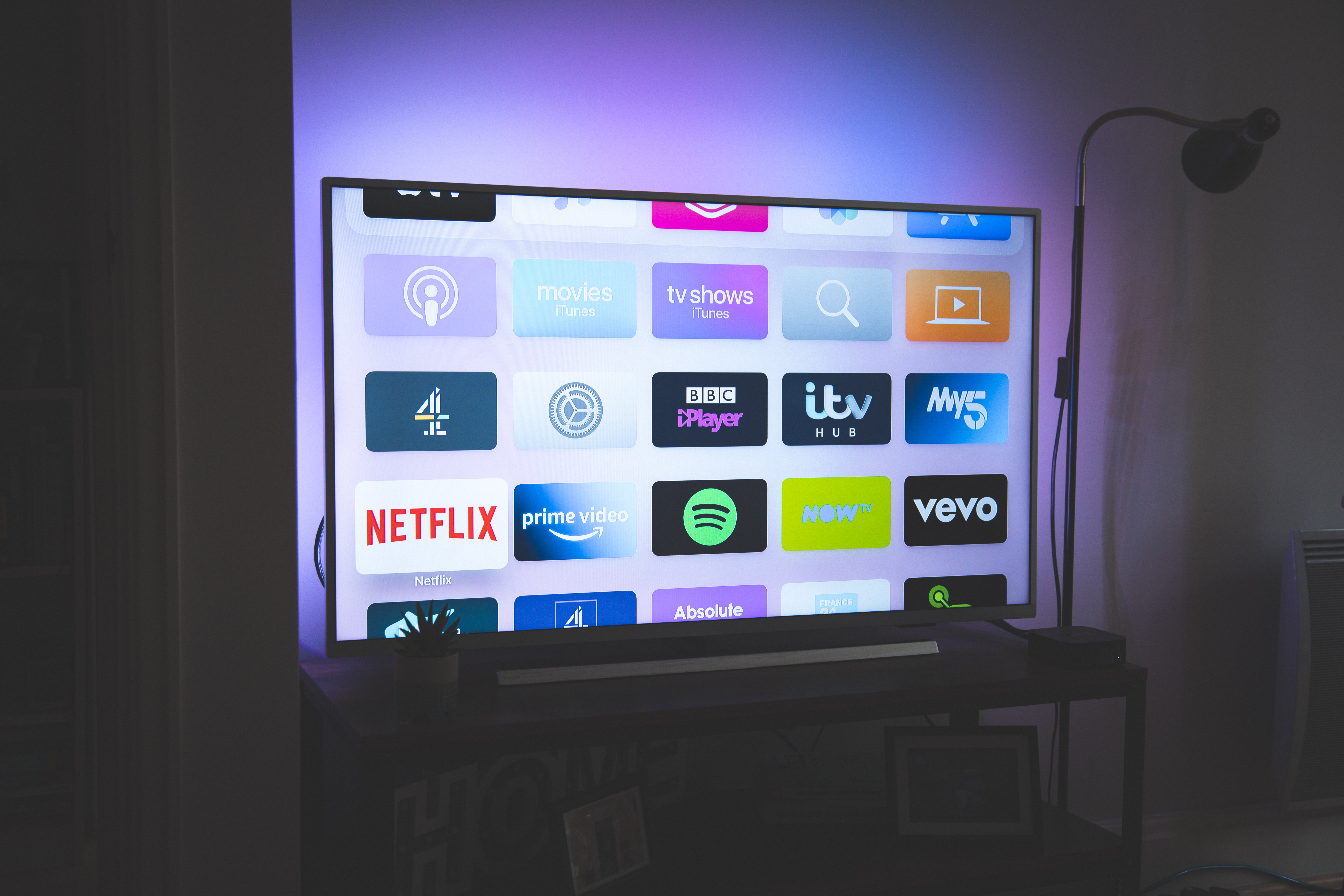Consumers have abandoned the CRT televisions of the past and have embraced media streaming devices or smart televisions to meet their entertainment needs.
Amazon Fire TV stick, Google TV Chromecast, Roku Streaming stick, Apple TV 4K...the list of streaming devices available to consumers is vast. These devices1 enable Americans to watch popular streaming platforms like Netflix, Amazon, or Hulu without having to subscribe to a traditional cable network. Similarly, smart televisions come with this capability readily built-in, so a separate streaming device isn’t even needed.
This is such a popular trend that over 80% of homes2 in the U.S have either a streaming device or smart television and that number seems to be increasing each year. Considering the high level of interest in this entertainment platform, it only makes sense for businesses to capitalize on it as an advertising opportunity.
Read on to learn more about what OTT and smart TV advertising are, how and when they work, and what the future holds for these fast-growing3 digital advertising media.
What is Smart TV Advertising?
Smart TV advertising is a form of over-the-top (or OTT) advertising. OTT means a consumer literally goes “over the top'' of traditional cable services and watches video content via an internet connection. OTT is convenient because consumers can stream content whenever and wherever they want (smart TVs, phones, computers, Playstations or XBoxes, tablets, etc.). The device on which streamed content is viewed is called a “connected TV” (or CTV, for short).
During this streamed content, businesses will advertise to viewers, which is an example of OTT advertising or CTV advertising. If it’s on a smart TV, then it’s called smart TV advertising.
How Does Smart TV Advertising Work?
There are three main subsets of OTT providers:
- Subscription Video-On-Demand (SVOD): Typically, subscription-based streaming services (that consumers pay for) like Netflix or Hulu do not have ads, or will only have them as part of a free version.
- Advertising Video-On-Demand (AVOD): Free streaming services like Crackle, Tubi, or Vudu offer free services to consumers because of the money they make from advertisements.
- Multichannel Video Programming Distributor (MVPD): Comcast, AT&T Now, Sling, or YouTube TV are considered MVPDs. Using these streaming service providers, consumers pay for a desired pool of popular television channels. For every hour of video content watched, consumers encounter two minutes of advertising4.
Based on a distinct media buying plan, businesses will choose which type of OTT provider works best with the overall marketing goal and budget. Businesses must then consider what type of connected TV advertisement meets the same criteria.
- In-Stream Video Ads: In-stream video ads play on streaming consoles, are typically 15-30 seconds long, and cannot be skipped. Businesses can elect to play them before or during a program.
- Interactive Pre-Roll Ads: An interactive pre-roll ad is similar to in-stream video ads in terms of length and functionality; however, it differs in that viewers can “interact” with the ad, oftentimes by a clickable feature that redirects to a landing page with a conversion opportunity. Interactive pre-roll ads are programmatic, automated ads so metrics are more easily tracked.
- Home Screen Placement Ads: Home screen placement ads are stationary ads, like an image or brief video content, that are placed at the top of the TV device’s screen (either a smart TV or OTT). Home screen placement ads will often include specific call-to-actions (CTAs) from the parent business.
Determining which type of CTV advertising meshes best with a business’s vision is a nuanced process, one that should not be overlooked when considering smart TV advertising in a marketing campaign.
When is Smart TV Advertising the Right Fit?
The most logical answer to that question is when linear TV advertising is not the right fit for a business's marketing strategy. Linear television offers the traditional means of watching a scheduled show on cable television, which includes traditional advertisement displays during a commercial line-up.
While linear TV5 offers a large audience reach and brand awareness platform, it does not work as well if a company is more specialized, with a highly-specific target audience. Smart TV advertising enables a business to find streaming content that matches its audience’s specific interests, thereby allowing them to advertise directly to them. Not only that, but CTV advertising also offers measurable metrics (like reach, frequency, or the number of ad views) as part of its campaign reporting capabilities. Such data points aren’t as easily tracked with linear TV as its real-time format best supports the 1-800 number6 strategy for tracking analytics.
So, when a business evaluates which marketing attribution path led to the most sales or conversions for a specific target audience, it may find that smart TV advertising, with its variety of formats, meets marketing campaign criteria more efficiently and effectively.
The Future of Smart TV Advertising
Considering that streaming service media spending has risen 40% in 20217 and is projected to continue to rise in 2022 and considering that linear TV advertising has dropped 4% this year, it is safe to say that the future of digital advertising looks promising. From a targeted audience to an interactive user experience, a variety of ad formats to flexible functionality, smart TV advertising’s capabilities are as vast as they are varied, taking campaigns to the next level.
MBI: The Next Level
As a full-service media planning and buying agency with 30 years in the field, MBI knows how to create a successful omnichannel marketing strategy, one that includes smart TV advertising. Using our seasoned negotiation skills, we can acquire the best rates to maximize your media budget. Contact us today if you have more questions about how digital advertising can benefit your business or if you are simply ready to go to the next level, together.
Sources:
[1] “The Best Media Streaming Devices for 2021”
[2] “80 Percent of U.S. Households Have At Least One Smart TV (Or Smart Something)”
[3] “CTV is Still Among the Fastest-Growing Channels in Digital Advertising”
[4] “Introduction to TV Advertising: MVPDs, Local and Addressable TV
[5] “Rethinking the Power of TV Advertising: Is It a Valuable Option for Your Brand?”
[6] “An Introduction to TV Advertising: Measurement”
[7] “U.S. TV Ad Spending to Drop 4% in 2021 as Digital Video Booms”

